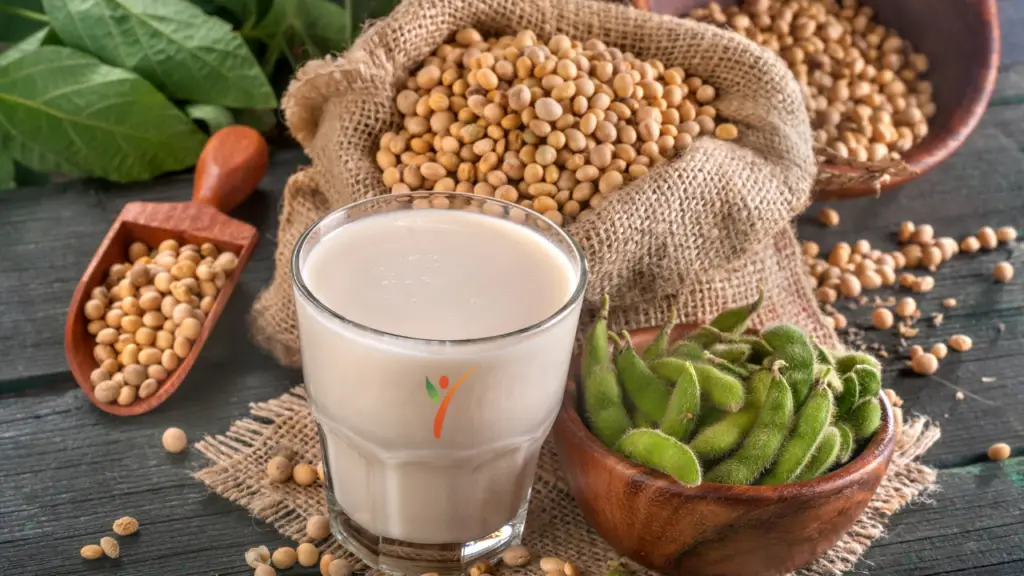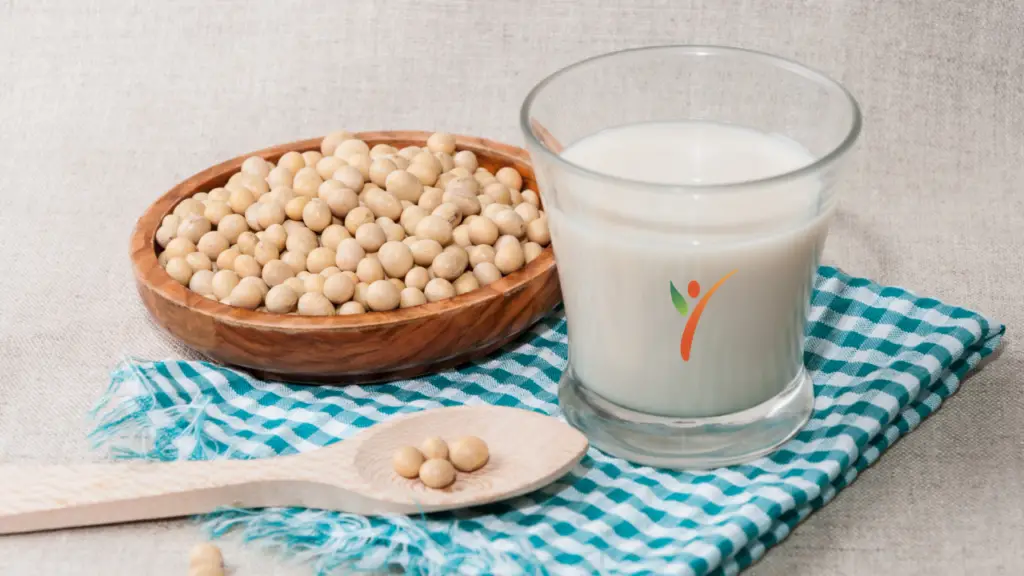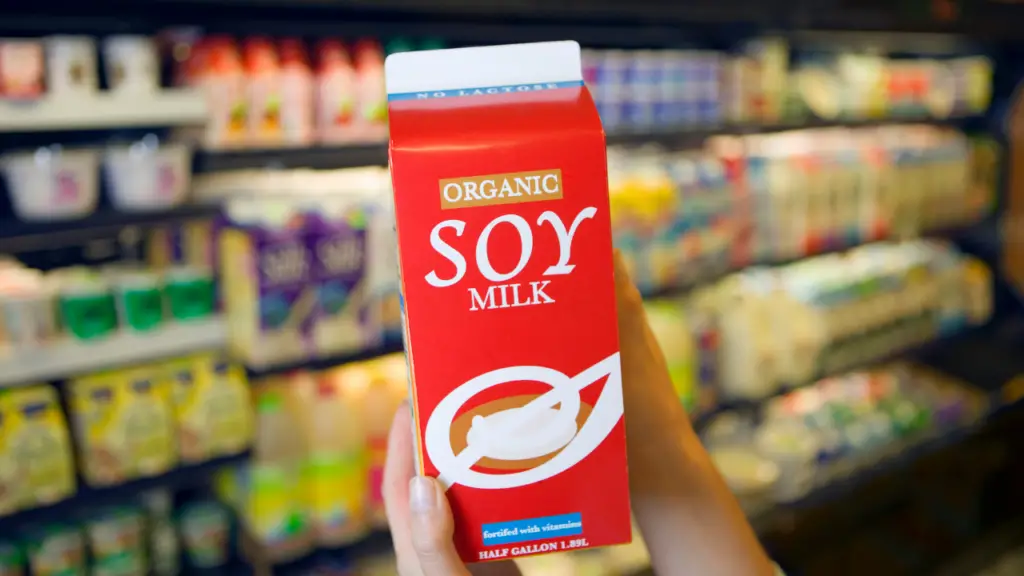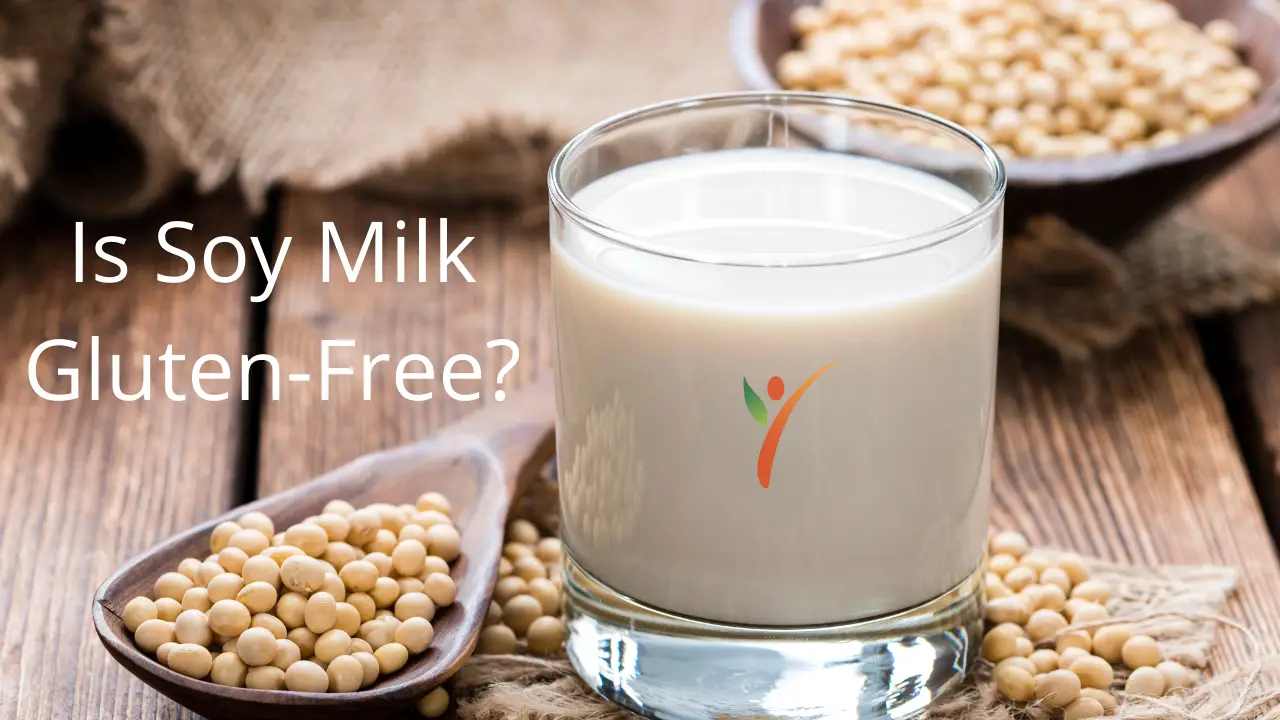Following a gluten-free diet can feel overwhelming at times when inspecting each ingredient of a product. But, eating a gluten-free diet is relatively easy once you have shifted to this new lifestyle.
Soy milk is much-loved plant-based milk that dairy-free and vegan dieters use. But is it safe on a gluten-free diet? What do you need to look for, and can you enjoy soy milk when going gluten-free? These are common questions asked by gluten-free dieters.
We have a guide that answers all your queries. By the end of it, if you don't already eat GF, you'll be much more motivated to adapt to the gluten-free lifestyle.
What Are Soybeans?
To understand soy milk, you'll first need to know what soybeans are and how they're used. In the simplest terms, soybean is a legume, an edible bean that grows on plants. They're similar to peas in the manner that the ‘seeds of the plant, i.e., the beans, grow inside the pod. Therefore, they're also classified amongst the pea family. Soybeans are typically grown in the East Asian region, and there are different types of them.

You'll commonly find three types of soybeans in the market, the distinction based on the colors. Yellow soybeans are the most common type and are used to make a variety of soy-based products.
Green soybeans are generally smaller in size and ideal for making edamame, which are steamed young soybeans. Black soybeans are comparatively the hardest ones to find and used in traditional Asian dishes.
The further classification includes the two groups of organic soybeans vs. genetically modified soybeans (GMO). Due to increased demand for soy-based products, most soybeans in the US are GMO. Everyday products made from soybeans include soy sauce, tofu, soybean oil, tofu, tempeh, and soy milk.
What is Soy Milk?
Soy milk is a plant-based alternative to traditional dairy milk. Cows produce cow's milk and other dairy products, which are collected, processed, and sold. Alternatively, soy milk is made from soybeans and has no connection with dairy.

The outer skin on the soybean is removed and then ground and boiled. This process releases the natural oils of the legume and results in a thick mixture enriched with fats and proteins. It is then mixed with water and cooked once more.
The final product is soy milk. The process is similar to other plant-based milk like almond milk and rice milk. You can consume soy milk or make other dairy alternatives, such as cheese, yogurt, cream, etc.
Gluten & Soy Milk
The connection between gluten and soy milk is a tricky one—soy milk, made from soybeans that naturally do not contain gluten. Unfortunately, statistics show that soy can be contaminated, and not just that but HEAVILY contaminated.
Imagine 2900+ ppm gluten in a sample of soy flour. The safe range is less than 20 ppm for gluten-free dieters and less than ten ppm for susceptible individuals. Of course, that's for soy flour, so what about soy milk?
The problem resides in the harvesting of soybeans. Most soybeans are harvested, stored, and processed alongside gluten-based grains, usually wheat crops. The proximity of soybean production with wheat results in gluten contamination on soybean plants too. Thus, the soybeans used to make soy milk are often already heavily contaminated, making the soy milk contaminated.

Besides gluten contamination during harvesting and storage, manufacturing facilities become a risk factor as well. Usually, manufacturing sites that process soy milk also process gluten-based products. Consequently, this brings another scenario where soy milk can get cross-contaminated.
Lastly, gluten-based additives are included in tons of processed foods nowadays. Due to their properties to enhance texture, viscosity, emulsification, shelf-life, and taste, it's a common practice among manufacturers to add them.
Others may also add malt or wheat to improve the flavor of the soy milk. This practice, however, deems harmful for gluten-free dieters who are avoiding gluten. Many look through the essential ingredients but not the additives, which becomes a cause for trouble.
It is important to note that the soy-based additive' soy lecithin,' a common ingredient, may contain gluten from soybeans. However, since it goes through heavy processing, most of it is eliminated in the final product.
What Can You Do?
If you're only shifting to a gluten-free diet as a healthier option, consuming traditional soy milk shouldn't be an issue. On the flip side, those who have celiac disease or gluten intolerance need to avoid conventional soy milk. Their diet is comparatively much stricter, and minor accidental consumption can trigger their symptoms.
Look for gluten-free soy milk, labeled or certified, which guarantees less than 20 or 10 ppm respectively. If you're not too scared of small amounts of gluten, check the label to be on the safe side.

Know the list of ingredients gluten hides when it comes to additives. Besides that, carefully inspect flavored soy milk, as those have a higher chance of gluten-based flavorings. Contact the manufacturer in case of any confusion.
Which Diets Can You Have Soy Milk On?
With its many health benefits, soy milk is more than just an option for gluten-free dieters and those with sensitive GI tracts. A recap- soy milk goes along perfectly with a dairy-free, vegetarian, vegan diet or simply lactose intolerant. It's plant-based milk with no added animal derivates, which is a common problem with processed foods.
Besides that, those on a high-protein, low-fat diet also benefit from adding soy milk to their routine. A single cup of soy milk contains only 4.3 g fat, 0.5 g saturated fat, and 8 g protein. Vegans and vegetarians often suffer from a lack of protein due to the exclusion of protein from meat and poultry. Soy milk can solve this problem.
What to Look Out For?
The top things you need to look out for when buying and consuming soy milk.
Go Organic:
Where possible, it's best to buy organic soybeans instead of GMOs to avoid the risks of health problems. A 2016 study showed that GMO soybeans are more likely to contain additional ingredients, like amino acids.
For those who are immunocompromised or have nut allergies, organic is a must. And. Organic soy milk is your best option when choosing store-bought soy milk.
Refined vs. Homemade:
It doesn't take scientists to know that processed goods are highly refined, especially some. Anything that is ‘too refined' or highly processed is not beneficial for your health in the long term. Some manufacturers stay true to natural foods, while others process them too much.

Do your research and go for more natural, healthier soy milk options. The best option, though, is to make homemade soy milk if you've got the time. It's cheaper, healthier, and you won't have to worry about gluten cross-contamination. Plus, you can customize the flavoring by adding a touch of vanilla essence or whatever suits your taste buds.
Labeled vs. Certified:
Labeled GF soy milk works if the smallest amount of gluten doesn't disrupt your digestive system. However, for those with extreme celiac or non-gluten sensitivity, even less than 20 ppm might not suit their body.
In that case, opt for certified GF soy milk, which contains less than ten ppm gluten. It's the lowest possible amount in processed goods. Then again, there are not many readily available certified GF soy milk manufacturers in the market. Once again, if that is a problem, opt for a homemade version.
Soy Intolerance:
Soy allergies are one of the top food allergies in the US and even worldwide. According to a 2019 study, 1.5 million people in the US suffer from soy allergies. What makes it worse is that a number of them either go undiagnosed or misdiagnosed. Soy allergy symptoms include skin conditions, irritation, runny nose, respiratory problems, etc.
So what's the connection with gluten? Among the most common soy allergy symptoms are digestive symptoms, e.g., abdominal cramps, nausea, vomiting, and diarrhea. These symptoms are similar to symptoms of celiac and gluten sensitivity.

So if you've noticed these symptoms, instead of self-diagnosing, see your doctor for a check-up. Self-diagnosis can do more harm than good if you're eliminating the wrong food group from your diet.
Changes in Hormonal Levels:
Among the most significant controversies on the food topic nowadays is soy milk. The sky-rocketing increased consumption of soy-based products has put many experts in a state of worry. Apparently, according to experts, soy and its products are not meant to be eaten in large quantities.
One of these reasons is that it is believed that increased soy consumption can lead to an imbalance in estrogen, a hormone produced by the thyroid. Specific chemicals inside soy are responsible for creating the imbalance, leading to hypothyroidism.
For those on thyroid medications, soy can decrease the optimal absorption of the medicine. In some cases, this may lead to severe conditions. Thus, consult your doctor before adding soy to your daily diet if you suffer from thyroid-related conditions.
Gluten-Free Soy Milk Brands
Here are some gluten-free brands that can be your first pick while shopping for soy milk:
Kirkland Signature:
Kirkland Signature is amongst the best gluten-free brands. Considered the healthiest option and a good choice considering all the soy milk brands by many experts. They have products loaded with all the necessary nutrients and essential vitamins and do not contain any additional flavors or extra sugar. You couldn't ask for more from a gluten-free brand that's also cholesterol-free.
Eden Foods:
Eden Foods produces two types of soy milk. EdenSoy is not recommended for celiac patients as it sometimes contains barley malt extract and wheat as a flavoring. But EdenBlend, on the other hand, is certified gluten-free. According to the company, the unsweetened EdenSoy is tested to be gluten-free and safe for patients with celiac disease.
8th Continental:
The brand produces two types of soy milk, namely original and vanilla. The company has tested both to check if they contain gluten in an amount less than 20ppm. After repeated trials, they declared their products to be gluten-free. If you wish to buy 8th Continental's soy milk from your local supermarket, look for it in the dairy section.
Silk:
Instead of using shelf-stable boxes, Silk introduced selling soy milk next to cow's milk in the dairy section. The company takes pride in admitting an extensive screening routine to detect the levels of gluten.

Since they make sure to prevent any contamination, they label their products gluten-free. They have a bunch of flavors for you to choose from. Additionally, they have soy-based coffee creamer as well if you're not interested in their soy milk.
WestSoy:
WestSoy has various flavors, such as vanilla and almond, that are tested to be gluten-free. All the WestSoy beverages that contain less than 20ppm of gluten bear a “GF” symbol that should be the cue for celiac patients. The brand hasn't restricted itself to making organic soy milk, as it also produces non-organic shelf-stable boxed milk.
Trader Joe's:
Trader Joe's has stocked up a massive pile of unsweetened as well as refrigerated flavored soy milk in various supermarkets. You might come across their not-so-common flavors if you are lucky. But you can get original organic and vanilla soy flavors from almost every superstore.
ZenSoy:
ZenSoy does not make any products that can trigger the symptoms of a celiac patient. For this reason, their soy milk is certified gluten-free. You can get plain chocolate, cappuccino, and vanilla flavors from your local supermarket's refrigerator. You might find ZenSoy puddings that are soy milk-based, along with their innovative “soy on the go” boxes.
Vitasoy:
Vitasoy is a reasonably priced product that's quite nutritious. Their soy milk's high protein content makes Vitasoy a healthy choice. Try their different flavors, such as chocolate and coconut, that are very tasty—testified by their devoted users who find it irresistible to consume it daily, making it a great gluten-free pick.
As always, read the food ingredients labeled on them. Choose the healthiest options without vegetable oil, food additives, or emulsifiers such as gellan gum.
Alternatively, if you are looking for soy milk recipes, add this homemade soy milk recipe to the top of your list. Or for a yummy summertime treat, this soy milk ice cream recipe.
Conclusion
You now know that soy milk is gluten-free, as long as it is labeled gluten-free at your grocery store. But, when purchasing soy products, always look for added flavorings in soy milk that may contaminate the soy milk.

Living a gluten-free life isn't letting go of every food your tastebuds have loved throughout the years. Instead, it's finding gluten-free, healthy alternatives to them and ensuring a balanced diet.
When you follow these rules, a gluten-free diet may be the best decision you make for your body. Research on the brands you're going for and steer clear of anything that seems suspiciously unhealthy.





